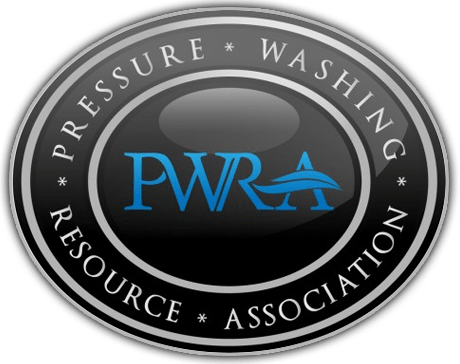How does a cleaner know if a window is safe to scrape?
This is a hot-button topic in the industry. The presence of fabricating debris on low-quality tempered glass creates all kinds of issues for window cleaners. But the simple fact is, FD is a reality and it’s not going to change any time soon.
So then, what can we do to minimize our risk when scraping tempered glass? Well, there are a number of techniques that can help. Let’s consider just one simple check we can do that will provide a window cleaner with valuable knowledge.
All tempered glass must be stamped by the manufacturer during production. These stamps look like this:
There are two main ways the manufacturer does this. One way is by sandblasting the stamp onto the glass. The other is by applying a porcelain stamp. The type of stamp used and where it is located on a given window can help a window cleaner determine which side of the glass is the “roller” side (the side that may be contaminated with fabricating debris) and which is the “upper” side (the side that is typically fine to scrape).
-
Sand-blasted stamps are always on the roller side of the glass. If you pass a razor gently over the stamp and can’t hear it, then it’s a sandblasted stamp. You’ve just identified the roller side and you should proceed with great caution. Bear in mind, the roller side of tempered glass isn’t always contaminated- it may be just fine to scrape this side. But, if there is FD present, it will be on this side.
-
Porcelain stamps are placed on the quality side of tempered glass. When you pass a blade over the stamp and you can feel it or hear it, then that’s a porcelain stamp and it should be free of fabricating debris. It is probably fine to scrape this side of the glass.







